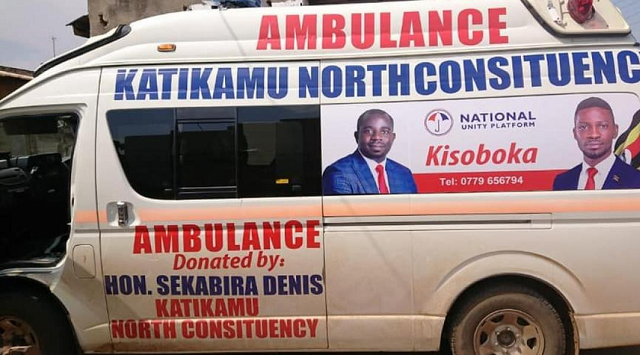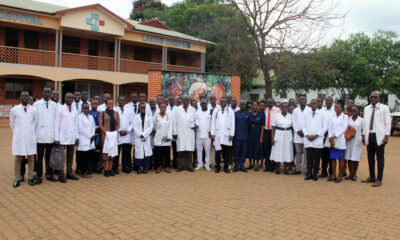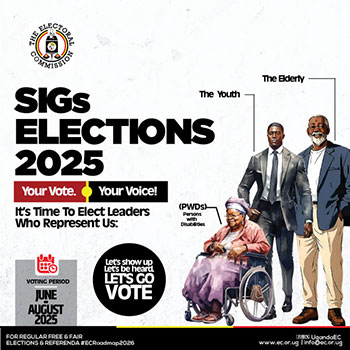Health
Ministry of Health Centralises Ambulance Services To Phase Out Substandard Vehicles
The Ministry of Health is set to revolutionise emergency medical services in Uganda by centralising the management of all ambulances through a new call and dispatch centre. This move aims to standardise ambulance operations and improve emergency care across the country.
Dr. Daniel Kyabayinze, the Director of Public Health at the Ministry, revealed that the government will soon phase out “Type One” ambulances, which are primarily basic transport vehicles often donated by politicians and individuals. These will be replaced with “Type B” or “Type B+” life support ambulances, which are equipped to provide essential emergency care during transit.
“What Members of Parliament and other individuals have been donating are mainly transport modes which don’t meet specifications required to qualify as ambulances,” Dr. Kyabayinze stated in an interview with URN. He emphasised that the new policy will guide future donations, ensuring that ambulances can offer basic emergency care rather than just transportation.
The new system will feature digital dispatching, electronically connecting patients or hospitals to the nearest available ambulance. This is expected to streamline response times and ensure more efficient deployment of resources.
This significant development comes amidst long-standing complaints from emergency care providers about substandard ambulances, particularly concerning trauma cases resulting from road crashes, where victims often sustain further injuries during evacuation due to inadequate vehicles.
However, the Ministry’s initiative faces the challenge of low public awareness and access to ambulance services. A survey conducted by the NGO Twaweza, through their Sauti za Wananchi phone-based studies, revealed that only two out of ten Ugandans are aware of an ambulance service in their area. The survey also highlighted that local Members of Parliament were the most commonly known providers of ambulance services, and only about five per cent of over 3,000 respondents knew the national toll-free number for emergency ambulance services.
The Ministry of Health’s centralised system aims to address these disparities, ensuring that all Ugandans have access to standardised and life-saving emergency medical transport.
Features of Type B and Type B+ Ambulances
The Ministry of Health in Uganda has established “National Norms and Standards for Ambulance Vehicles,” which categorise ambulances and outline their required equipment. The shift towards Type B and Type B+ (or C) ambulances signifies a move from basic transport to vehicles capable of providing medical care.
Type B (Emergency Ambulance / Basic Life Support Ambulance): These are designed to provide basic life support during patient transport. Key features and equipment generally include:
Vehicle Specifications:
-
- Purpose-made, factory-prepared ambulance vehicles (modifications on pick-up vehicles are generally not accepted for new procurements).
- Separate driver and patient compartments.
- Specific dimensions for length, width, and height.
- Adequate ground clearance.
- Warning systems (siren, LED light bar).
- Communication systems (mobile and portable radio transceivers, access to public telephone networks).
Patient Compartment:
-
- Reinforced interior structure with anti-corrosion treatment.
- Thermal and acoustical insulation.
- Washable, anti-fire, anti-fungal, and anti-bacterial lining materials.
- A main stretcher, often made of aluminium with an adjustable headboard, seatbelts, and transferability.
- Individual seats with arm supports and 3-point seatbelts.
- Oxygen system with an oxygen bottle, mask, regulator, and humidifier.
- Holders for intravenous solutions.
- Lighting with a dimmer switch and an adjustable electric ventilator.
- First aid cabinets and sharp containers.
- Multiple 12V and 220V plugs.
Basic Medical Equipment:
-
- Stethoscope
- Oxygen bottle (e.g., 7 liters)
- First Aid Box
- Aspiration flow meter and regulator, with suction catheters and tubes
- Manual resuscitator with masks (adult, pediatric, neonatal)
- Sphygmomanometer (blood pressure cuff)
Type C (Mobile Intensive Care Unit / Advanced Life Support Ambulance): These are more advanced, essentially mobile intensive care units, capable of providing critical care en route. They would include all the features of a Type B, plus more sophisticated medical equipment for advanced life support, such as:
- Defibrillators
- ECG machines
- Ventilators
- Advanced emergency life-saving drugs
- Orthopedic splints
- Negative pressure specifications (for isolation, relevant for infectious diseases)
- Multistage HEPA filters in the HVAC system
- High-capacity negative air system in the patient compartment
- Antimicrobial LED lighting
The Ministry of Health’s guidelines for ambulance norms and standards, which were established around 2021, serve as the basis for these requirements.
While a precise, publicly announced “start date” for the full operationalization of the central call and dispatch center and complete phasing out of Type One ambulances isn’t readily available, the Ministry of Health has been working towards this for some time. Here’s what we know:
Policy Foundation: The “National Emergency Medical Services Policy, 2021” was approved in September 2021. This policy lays the groundwork for establishing a functional ambulance and referral system, including defining ambulance standards and a coordinated EMS system.
Strategic Plan: The Ministry of Health’s Strategic Plan (e.g., 2020/21 – 2024/25) includes objectives for improving accessible and quality healthcare, which aligns with centralizing ambulance services.
Ongoing Progress: Reports indicate that significant strides have already been made:
-
- National ambulance systems have been established.
- Over 500 first responders have been trained.
- Call and dispatch centers have been set up in places like Naguru and Masaka.
- Plans are underway to build additional centers in Lira, Mbale, Arua, and Mbarara, with a goal of achieving 75% emergency response coverage.
Budgetary Allocation: Emergency Medical Services funding has seen an increase, from UGX 536 million in 2021 to UGX 11.3 billion for the 2024/25 financial year, though more funding is still needed.
Phasing Out “Type A” (formerly “Type One”): While the exact timeline for completely phasing out the basic transport ambulances is not specified, Dr. Kyabayinze’s statement indicates this will happen “soon” once the central dispatch centre is operational. Given the ongoing establishment of dispatch centres, it suggests the transition is actively in progress. The aim is to ensure that all ambulances can extend basic emergency care.
In essence, the centralisation and upgrade of Uganda’s ambulance services are part of a broader, multi-year strategic initiative guided by national policy, with tangible progress already evident in establishing infrastructure and training personnel.
Comments

























